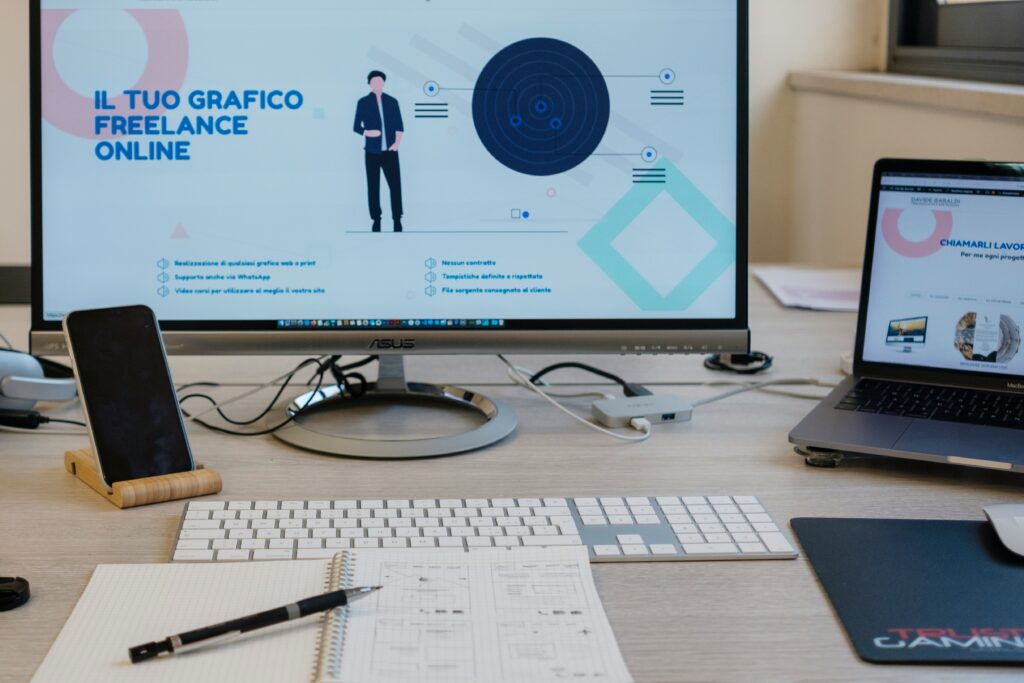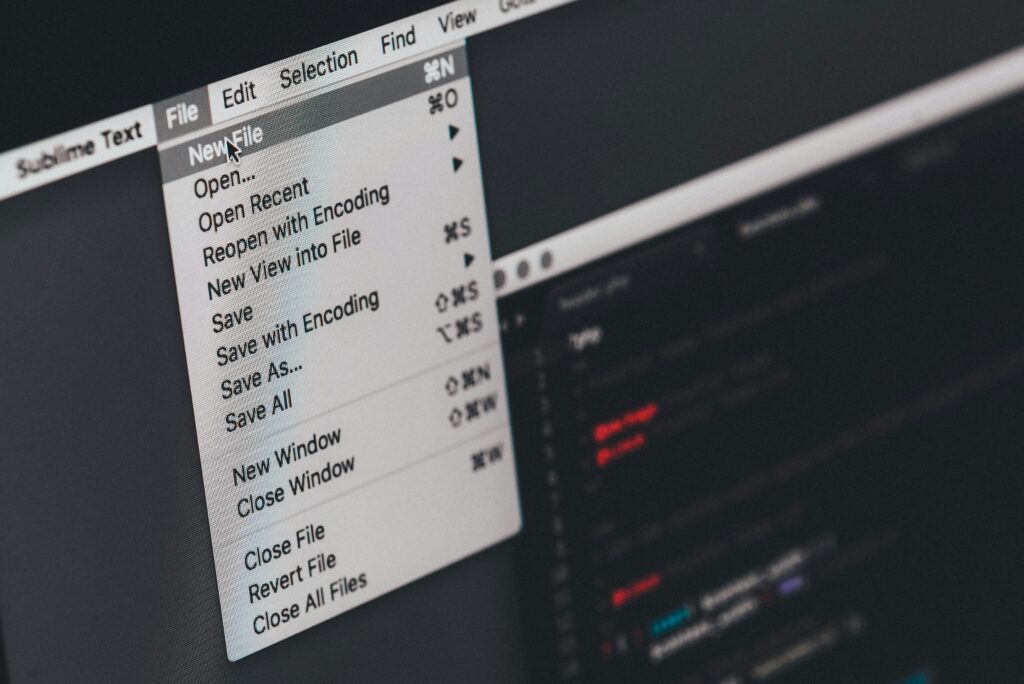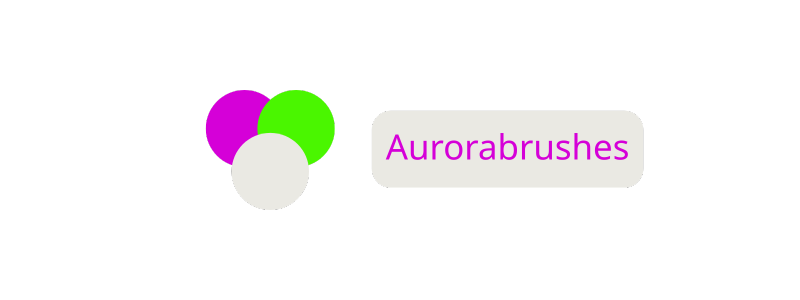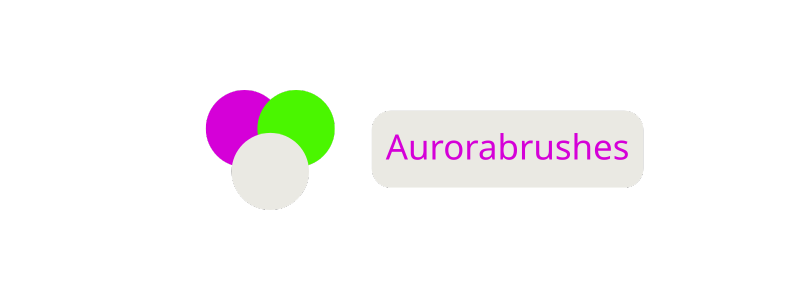How to Become a Web Designer Without a Degree: Step-by-Step Guide to Launch Your Career
I’ve always believed that creativity and determination matter more than a diploma when it comes to building a career as a web designer. The digital world moves fast and it’s full of opportunities for those willing to learn and adapt. You don’t need a traditional degree to turn your passion for design into a thriving profession.
With the right skills and a strong portfolio you can stand out to clients and employers. I’ll show you how to start from scratch learn what really matters and build a web design career on your own terms.
Understanding the Role of a Web Designer

A web designer creates the visual layout and interaction of websites, aligning user needs with business goals. My work combines graphic design, usability principles, and basic coding. I focus on color schemes, typography, images, layout grids, and responsive design.
Core Responsibilities of a Web Designer
| Responsibility | Context | Example Tools |
| Designing Layout | Wireframes, UI | Figma, Adobe XD |
| Creating Visual Assets | Icons, Images | Photoshop, Illustrator |
| Ensuring Usability | Navigation, UX | Sketch, InVision |
| Optimizing for Devices | Responsiveness | Bootstrap, CSS Grid |
| Collaborating | Clients, Teams | Slack, Trello, Zeplin |
Essential Skills in Web Design
I build effective websites by combining these skills:
- Visual design: Typography, color theory, and composition for pleasing interfaces
- User experience (UX): Wireframes, prototypes, and flows enhancing user satisfaction
- Basic coding: HTML, CSS, and JavaScript for implementing interactive elements
- Communication: Client interaction and feedback handling for project success
- Problem-solving: Responsive fixes, cross-browser issues, and accessibility improvements
Typical Work Environments
Web designers work in multiple contexts:
- Digital agencies: High client turnover, diverse industry projects, collaborative teams
- In-house teams: Single brand focus, consistency, and long-term growth
- Freelance: Flexible schedules, direct client relationships, varied project scopes
Common Tools for Web Designers
| Tool | Primary Use | Platform |
| Figma | Prototyping, Layout | Web, Desktop |
| Adobe Photoshop | Visual assets, Images | Desktop |
| HTML/CSS | Coding, Styling | Web |
| Sketch | UI Design | macOS |
| VS Code | Code Editor | Web, Desktop |
I rely on these tools daily to streamline processes, enhance creativity, and deliver professional web solutions.
Essential Skills for Aspiring Web Designers
Mastering web design means developing a blend of technical, creative, and interpersonal skills. I leverage these essential capabilities to create responsive and engaging digital experiences.
Technical Skills
Technical skills lay the foundation for all web design work. I focus on these core areas:
- HTML & CSS
Coding layouts and styles using HTML5 and CSS3 ensures my designs render consistently across browsers.
- Responsive Design
Adapting layouts to fit different screen sizes enhances usability on phones, tablets, and desktops.
- JavaScript Basics
Adding interactivity, such as sliders or dynamic menus, relies on JavaScript fundamentals.
- Web Design Tools
Utilizing Figma for wireframes, Adobe Photoshop for imagery, and VS Code for coding improves both speed and quality.
| Skill | Example Tools/Technologies |
| HTML & CSS | HTML5, CSS3 |
| Responsive Design | Bootstrap, Media Queries |
| JavaScript Basics | Vanilla JS, jQuery |
| Design Tools | Figma, Adobe Photoshop, Sketch, VS Code |
Creative and Design Skills
Creative and design skills drive my ability to deliver appealing and user-centered sites:
- Typography & Color Theory
Choosing readable fonts and harmonious colors ensures clarity and brand consistency.
- UI/UX Design
Wireframing, prototyping, and emphasizing intuitive navigation keeps users engaged.
- Visual Hierarchy
Structuring content and visuals by priority improves scan-ability and impact.
| Design Element | Impact | Supporting Tools |
| Typography | Readability | Google Fonts, Figma |
| Color Palette Selection | Brand Consistency | Adobe Color, Coolors |
| Visual Hierarchy | User Focus | Figma, Sketch |
Soft Skills and Communication
Soft skills and communication support every successful project and client relationship:
- Client Communication
Explaining concepts, gathering feedback, and clarifying requirements streamlines my workflow.
- Collaboration
Working with developers, marketers, or clients keeps projects moving in the right direction.
- Problem Solving
Troubleshooting design, usability, or technical challenges helps me deliver reliable results.
- Time Management
Meeting deadlines and prioritizing tasks builds trust and efficiency.
| Soft Skill | Example Scenario |
| Client Communication | Presenting prototypes to clients |
| Collaboration | Coordinating with teammates |
| Problem Solving | Debugging layout issues |
| Time Management | Delivering projects on schedule |
Building Your Web Design Portfolio
Web design portfolios give clients and employers tangible proof of my skills and style. I assemble case studies and visuals that showcase unique project solutions, creativity, and client value.
Working on Personal Projects
Personal web design projects help me highlight core web designer skills. I create mock websites, redesign real brands, and build interactive prototypes to demonstrate layout, usability, and interface design. Each project displays different techniques, such as responsive grids and custom UI, using tools like Figma or HTML/CSS. I include project summaries and targeted skill sets for context.
| Project Type | Skills Demonstrated | Tools Used |
| E-commerce mockup | UI, color theory, UX flows | Figma, Photoshop |
| Restaurant landing page | Responsive design, layouts | HTML, CSS, VS Code |
| Personal blog template | Typography, visual hierarchy | Figma, Sketch |
| Portfolio site | Branding, client communication | HTML, CSS, JavaScript |
Contributing to Open Source and Freelance Opportunities
Open source and freelance projects expand my web designer experience and portfolio. I contribute to open source repositories by improving UI for community projects, such as documentation sites or nonprofit pages. These contributions let me practice collaboration, coding, and accessibility compliance in real environments.
Freelance gigs on marketplaces like Upwork, Fiverr, and 99designs provide exposure to brief-driven design processes. I select small business websites, landing pages, or marketing campaigns as portfolio examples. I highlight before-and-after screens, client objectives, and achieved outcomes for clarity.
| Opportunity Type | Platforms/Communities | Key Benefits |
| Open source projects | GitHub, Mozilla, WordPress | Networking, code review, teamwork |
| Freelance projects | Upwork, Fiverr, 99designs | Real clients, varied briefs, testimonials |
If I create and share diverse projects, my web design portfolio stands out and demonstrates industry readiness.
Learning Resources for Web Design Without a Degree
Finding reliable learning resources allows me to build web design skills independently. I access knowledge through structured courses, updated reading materials, and active industry communities.
Online Courses and Tutorials
Online courses and tutorials provide comprehensive web design training. Platforms such as Coursera, Udemy, and freeCodeCamp offer step-by-step modules. In these courses, I acquire essential knowledge in HTML, CSS, JavaScript, responsive design, and user experience. For example, freeCodeCamp focuses on practical coding challenges, while Coursera partners with top universities for certificate programs. Interactive sites like Codecademy give hands-on practice so I can immediately apply concepts.
| Platform | Key Features | Example Topics | Free Option |
| freeCodeCamp | Coding projects, peer support | HTML, CSS, JavaScript | Yes |
| Udemy | On-demand video courses, lifetime access | Web design fundamentals | Sometimes |
| Coursera | University-backed certifications, quizzes | UI/UX design, Responsive | Some courses |
| Codecademy | Interactive practice, project-based lessons | CSS, Flexbox, Grid Layouts | Limited |
Books and Blogs
Books and blogs expand my theoretical and practical understanding of web design. Foundational books such as « Don’t Make Me Think » by Steve Krug and « HTML and CSS: Design and Build Websites » by Jon Duckett cover usability, visual hierarchy, and coding. Blogs like Smashing Magazine and CSS-Tricks deliver insights on the latest trends, tools, and best practices. I consult these materials to deepen specialized areas like accessibility, information architecture, or front-end workflows.
| Resource | Author/Creator | Focus Area |
| Don’t Make Me Think | Steve Krug | Usability & UX basics |
| HTML and CSS (Book) | Jon Duckett | Web coding foundations |
| Smashing Magazine (Blog) | Editorial Team | Design news, tutorials |
| CSS-Tricks (Blog) | Chris Coyier | CSS, workflows, tips |
Community Forums and Networking
Community forums and networking groups let me learn from experienced designers. Platforms such as Designer Hangout, Stack Overflow, and Reddit’s r/web_design channel provide real-time discussion and problem-solving. By engaging in forums, I receive feedback, stay updated on industry changes, and connect for collaboration. Design communities like Dribbble and Behance showcase portfolios, while LinkedIn groups or local Meetups facilitate professional networking.
| Forum/Community | Primary Purpose | Example Benefits |
| Designer Hangout | Professional networking | Career opportunities |
| Stack Overflow | Developer Q&A | Fast coding solutions |
| r/web_design (Reddit) | Peer learning | Portfolio feedback |
| Dribbble | Portfolio showcase | Creative collaborations |
Finding Your First Web Design Job

Landing my first web design job doesn’t depend on holding a degree. Employers and clients evaluate tangible skills, project experience, and professionalism.
Crafting a Standout Resume and Cover Letter
I create a tailored resume that highlights my core web design skills, software proficiency, and links to my strongest portfolio projects. I emphasize job-relevant accomplishments, such as launching responsive sites or contributing to open source projects. Each cover letter addresses the specific job, referencing my experience with tools or industries relevant to the posting. I showcase evidence of problem-solving and adaptability in past client or freelance work.
Key Resume Elements Table
| Section | Example Content |
| Contact Info | Name, email, portfolio URL, LinkedIn link |
| Skills | HTML, CSS, Figma, responsive design, UX |
| Projects | Redesign for travel blog, freelance e-commerce store |
| Experience | Freelance work, open source contributions |
| Education/Training | Udemy web design courses, Coursera UX certification |
Preparing for Interviews and Building Connections
I practice responding to web design interview questions, focusing on client communication, project management, and specific design decisions from my portfolio. I bring concise anecdotes about challenges I faced when designing or coding, illustrating my workflow and results. Networking in relevant online groups and participating in community events, such as webinars or design meetups, help me build connections. I use platforms like LinkedIn, Discord channels for designers, and Dribbble to interact with professionals and discover hidden job leads.
Common Web Design Interview Questions Table
| Question Topic | Example Question |
| Design Process | « How do you start a new web project? » |
| Problem Solving | « Describe a time you overcame a design challenge. » |
| Tools & Technology | « Which design or coding tool do you use most? » |
| User Experience (UX) | « How do you improve a site’s usability? » |
| Collaboration | « How do you handle feedback from clients/teams? » |
Joining online communities and sharing work demonstrates my skills to potential recruiters and collaborators. When I contribute to discussions or help others, I increase my visibility and strengthen my reputation within web design circles.
Tips for Continuous Growth in Web Design

Engaging in continuous learning keeps my web design skills fresh. I explore new trends and adopt tools like Figma updates and advanced CSS frameworks as they launch. Reading authoritative blogs, such as Smashing Magazine and A List Apart, exposes me to up-to-date best practices, while subscribing to newsletters keeps my feed current.
Participating in web design communities helps me collaborate and improve. I join forums like Designer Hangout or the r/web_design subreddit, where designers share feedback and answer questions. Attending online webinars and workshops connects me with trends and methods others use to solve real problems. Giving and receiving critiques in these spaces sharpens my creative process.
Building side projects tests my abilities and expands my portfolio. I experiment with new layouts, animation libraries, and responsive techniques in personal projects, then document what works best. When I redesign existing websites for fictional clients, I quickly gain hands-on experience in UI/UX and accessibility.
Networking regularly grows my presence. I attend local design meetups, remote hackathons, or industry conferences to meet potential collaborators and clients. Sharing work on Behance, Dribbble, and LinkedIn boosts my digital footprint and attracts valuable feedback.
Tracking my progress provides clarity. I set quarterly skill goals, such as mastering CSS Grid or learning SVG animation, and review them monthly. Comparing previous work with new projects shows how much my visual design and coding have improved.
Continuous Learning Channels Comparison
| Channel Type | Example Platforms | Key Benefit | Frequency |
| Online Courses | Coursera, Udemy | Structured curriculum | Self-paced |
| Design Blogs | Smashing Magazine, CSS-Tricks | Latest industry insights | Weekly |
| Video Tutorials | YouTube, Frontend Mentor | Practical demonstrations | On demand |
| Community Forums | Designer Hangout, Reddit | Direct peer feedback | Daily |
| Webinars & Workshops | Awwwards, Local Meetups | Network and Q&A | Monthly/Quarterly |
Conclusion
Breaking into web design without a degree is absolutely possible if you’re willing to put in the work and stay curious. I’ve found that the most important thing is to keep learning and adapting as the industry evolves.
Your skills and portfolio will speak louder than any diploma ever could. Take every opportunity to practice, connect with others, and showcase your abilities. With persistence and passion, you can carve out your place in the world of web design.
Frequently Asked Questions
Do I need a degree to become a web designer?
No, you don’t need a formal degree to become a web designer. Creativity, determination, and a strong portfolio showcasing your skills are more important and valued by employers and clients in the industry.
What key skills do web designers need?
Web designers need technical skills like HTML, CSS, responsive design, and basic JavaScript. Creative abilities in typography, color theory, and UI/UX design are also essential, along with strong communication, problem-solving, and time management skills.
What tools are commonly used in web design?
Popular web design tools include Figma, Adobe Photoshop, Sketch, Visual Studio Code (VS Code), and HTML/CSS. These tools help with designing layouts, creating graphics, coding, and collaborating with clients or teams.
How can I build a web design portfolio with no experience?
Start by creating personal projects, redesign existing websites, work on mock brands, or contribute to open source projects. Freelance opportunities and internships also provide real-world experience to showcase in your portfolio.
Where can I learn web design online?
You can learn web design through online courses and tutorials on platforms like Coursera, Udemy, and freeCodeCamp. Books such as « Don’t Make Me Think » and « HTML and CSS: Design and Build Websites » are also helpful, as are industry blogs and design forums.
How do I find my first web design job without a degree?
Focus on building a strong portfolio, customize your resume and cover letter to highlight relevant skills, and practice common web design interview questions. Network in online communities and at events to make connections and increase your job prospects.
What are typical work environments for web designers?
Web designers work in digital agencies, in-house teams, or as freelancers. Freelancing offers flexible schedules, while agencies and in-house roles may provide more structure and collaboration with larger teams.
Which soft skills are important for web designers?
Essential soft skills include client communication, collaboration, problem-solving, adaptability, and time management. These skills help ensure successful projects and positive client relationships.
How can I keep my web design skills up to date?
Stay updated by learning new trends, joining design communities, attending webinars or local meetups, and working on side projects. Set skill goals and regularly compare your recent work to earlier projects to measure your growth.
What are the best ways to network as a web designer?
Engage in online design forums, attend local meetups or design events, and connect on platforms like LinkedIn. Sharing your work and collaborating with others helps grow your presence and reputation in the web design community.

